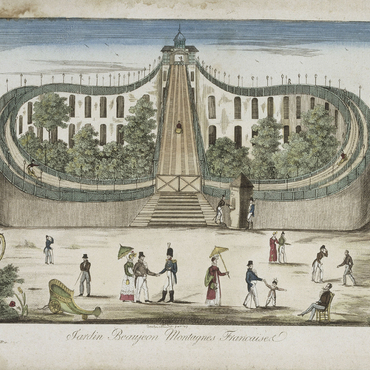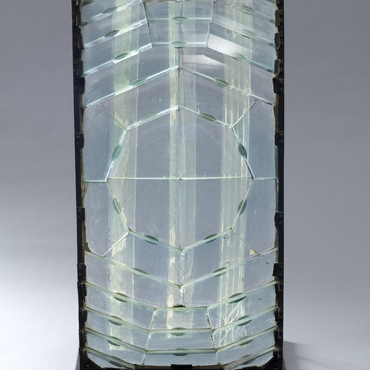
- Home
- Fresnel’s laboratory
- Cordouan, testing ground for Augustin Fresnel
- Fresnel's lens
The system designed by Fresnel was based on the principle of geometric optics known as the "Snell–Descartes law". When light passes from one medium to another – for example, air to glass and then to air once again – it changes direction. The idea was to create parallel beams of light emitted by a light source within the lens. Past an angle of incidence, the light is trapped in the glass. One speaks then of "total reflection", used in the so-called " catadioptric" parts of the apparatus. The system designed by Fresnel was based on the principle of geometric optics known as the "Snell–Descartes law". When light passes from one medium to another – for example, air to glass and then to air once again – it changes direction. The idea was to create parallel beams of light emitted by a light source within the lens. Past an angle of incidence, the light is trapped in the glass. One speaks then of "total reflection", used in the so-called " catadioptric" parts of the apparatus. In Fresnel's system, only the air/glass interfaces are useful. This allowed Fresnel to limit the amount of glass required to create arrays of prisms. The system had two advantages: it reduced the weight of the equipment that had to be placed atop the tower, and it meant that separate, smaller prisms could be manufactured and subsequently assembled in a bronze frame. Inside the lens, a concentric-wick lamp provided the source of light. Fresnel's first lenses had three settings: fixed, or with eclipses every 30 seconds or every minute. Intermittent lighting was achieved with a rotation machine turned by a weight. These settings would evolve over the course of the nineteenth century: an accelerated rotation by floating the lens in a vat of mercury and more powerful sources of light provided by gas or electricity turned Fresnel's star-lighthouses into beacons that flashed like lightning.

